In this article, we share tips and tricks to make your Coleus foliage healthy, bouncy, and bushier for both containers and garden beds.
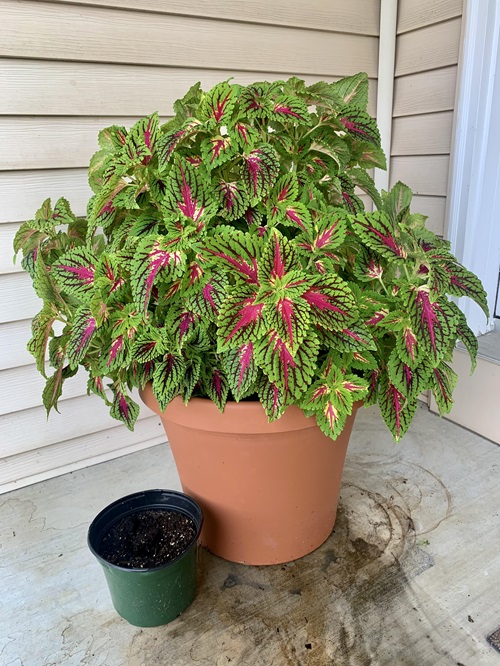
Native to tropical Asia, coleus is a shade-loving annual belonging to the mint family. While it produces blooms, this plant is treasured for its spectacular foliage, which appears in numerous hues, patterns, and sizes. So, we’re here to help you make your coleus bushier!
How to Make Coleus Bushier
1. Choose the Right Variety
Choosing the right coleus variety affects how bushy it gets and its overall growth. You can choose varieties like Kong Red, Watermelon, and Wizard Mix–known for their dense foliage. Selecting a bushier variety reduces the need for frequent pinching and pruning, as the plant naturally grows in a fuller, more rounded shape.
Trailing Plum and Red Trailing Queen are bushy varieties with a trailing habit and are perfect for hanging baskets and as ground covers. Varieties like Giant Exhibition Palisandra are bushy and tall, filling out empty corners and barren spots with their magnificent foliage.
2. Pinching
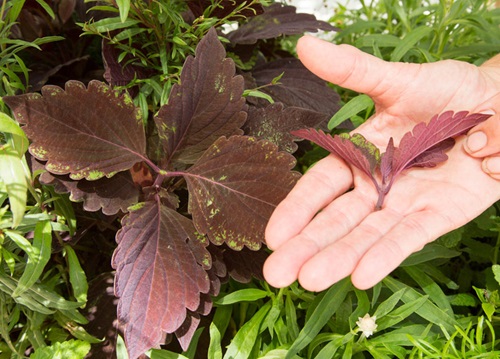
The most successful way to make your coleus bushy is to pinch it. Hold the top tips of the plant between your fingers and gently but firmly pinch them off. This will awaken the plant’s buds and prompt fresh sprouts.
Pinching the top tips helps redirect the plant’s energy to the lateral buds and promotes side growth, giving an overall bouncy and full look. Repeat this process every few weeks to maintain a dense, bushy plant.
3. Spring Pruning
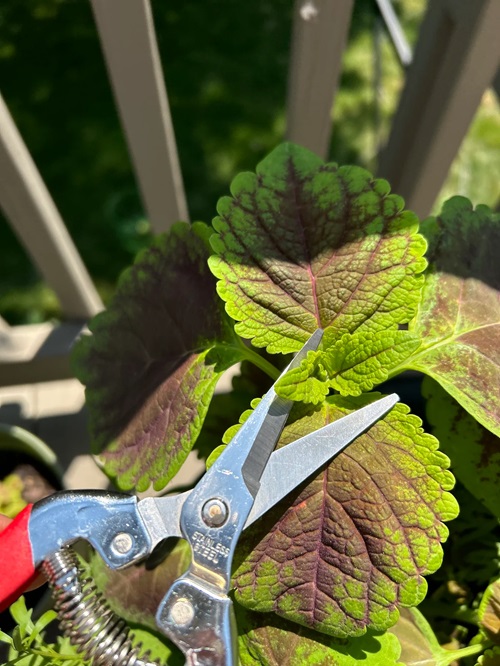
Although you can prune your coleus in different seasons, including fall, spring is considered the best season to promote bushier growth. During this period, the plant actively grows, and pruning it now will make it grow vigorously and prevent it from being leggy.
Clip off a couple of inches from the top of the stems when your coleus is about 4-6 inches tall. This forces the plant to branch out. Use clean, sharp scissors to make a precise cut just above a leaf node, where new leaves and stems will emerge.
If the plant becomes too tall or sparse, cut back longer and spindly stems by about one-third to promote denser growth.
4. Deadheading for More Foliage 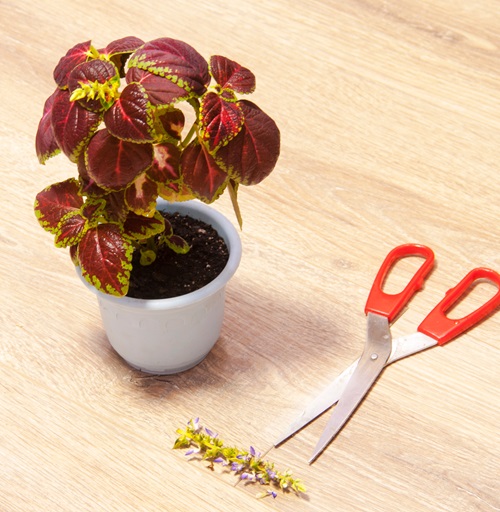
Coleus blooms are borne on spikes and appear at the end of the season. But we don’t grow it for flowers now, do we? Deadhead these blooms as and when you see them so your coleus can use this energy to produce abundant and healthy foliage instead of blooms or seeds.
5. Rotating the Plant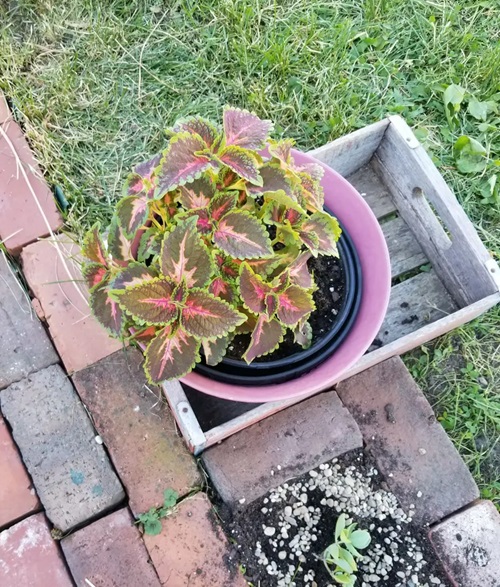
Rotating the container in which your coleus resides ensures even growth on all sides, especially if your plant is growing indoors or in low light. By doing this, your plant will receive sufficient indirect light from all sides, ensuring that it grows evenly and stays bushy all over. Otherwise, it would lean towards the side that gets more light and turn lanky and leggy.
Every few days, give your coleus a quarter turn to ensure equal sunshine throughout its foliage.
6. Grow Multiple Varieties Together
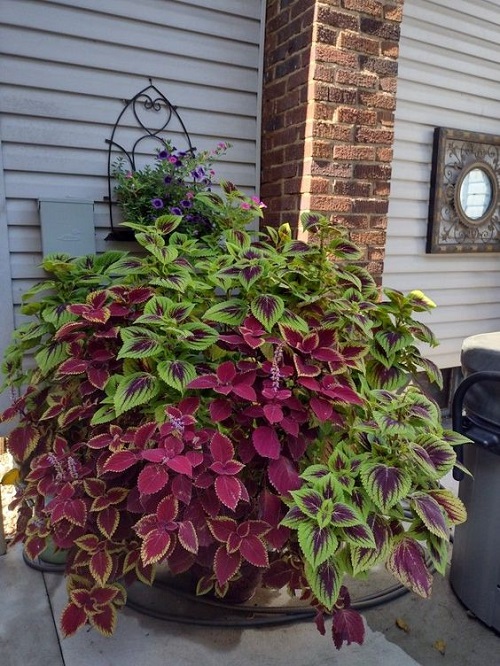
You can grow various coleus varieties together to create a bushy and versatile display. Combine trailing ones with tall varieties like the ones mentioned above for stunning, wholesome arrangements in your garden and home.
To make it bushier, plant multiple cuttings in a single pot and evenly space them out to ensure breathability but close enough to grow densely.
7. Maintain Warmth
Coleus thrives in warmth and humidity and cannot tolerate cold. These tropical beauties love temperatures around or above 60 (16 C), in which they can branch out vigorously and produce thick foliage.
If you grow coleus as a standalone plant, it’s important to keep it cozy to prevent stress that can lead to leggy growth. In colder climates, keep your coleus with other heat-loving plants so you can provide all of them with warm conditions and sufficient humidity amongst them.



Very informative and interesting site love for all the beautiful informations